
Roots
Consider the textured strands that crown so many heads across the globe, each coil and curl a testament to a deep, living history. For those whose heritage connects to Black ancestry, hair is never merely a collection of fibers. It is a conduit, a storyteller, a living archive of resilience and identity.
Braids, in particular, rise as potent symbols within this rich heritage, their patterns echoing narratives from ancient civilizations to contemporary expressions of self. These styles, far from being mere adornments, carry profound cultural weight, reflecting social standing, spiritual beliefs, and even coded messages of resistance across generations.
The history of braiding within African cultures stretches back millennia, with evidence of intricate styles dating to 3500 BCE in places like ancient Egypt and South Africa. Early depictions, such as rock paintings in the Sahara desert from 3500 BCE, reveal the deep antiquity of these practices. These early styles were not simply about aesthetics; they served as a complex visual language.
In pre-colonial African societies, hair communicated a person’s tribe, social status, age, marital status, wealth, and even religious beliefs. The very act of braiding was communal, fostering social bonds and passing down cultural traditions from one generation to the next.

What Is The Core Structure Of Textured Hair?
Textured hair, encompassing a spectrum from waves to tight coils, possesses a unique anatomical structure that informs its care and styling. Unlike straight hair, the hair shaft of textured hair is typically elliptical or flat in cross-section, which contributes to its characteristic curl pattern. The cuticle, the outermost layer of the hair, tends to be more open in highly textured hair, making it prone to moisture loss. This inherent structure, while sometimes perceived as “unruly” by those unfamiliar with its needs, is precisely what allows for the remarkable versatility and sculptural quality seen in braided styles.
Understanding the fundamental biology of textured hair is essential to appreciating the ingenuity of ancestral hair care practices. Traditional methods often centered on retaining moisture and minimizing manipulation, which modern science validates as crucial for maintaining hair health and length retention. These practices were not born of scientific laboratories, but from generations of observation and wisdom, passed down through the tender touch of a mother braiding her child’s hair, a ritual that strengthened familial ties alongside hair strands.
Braids in Black heritage are living symbols, embodying ancient wisdom, social communication, and enduring cultural identity.
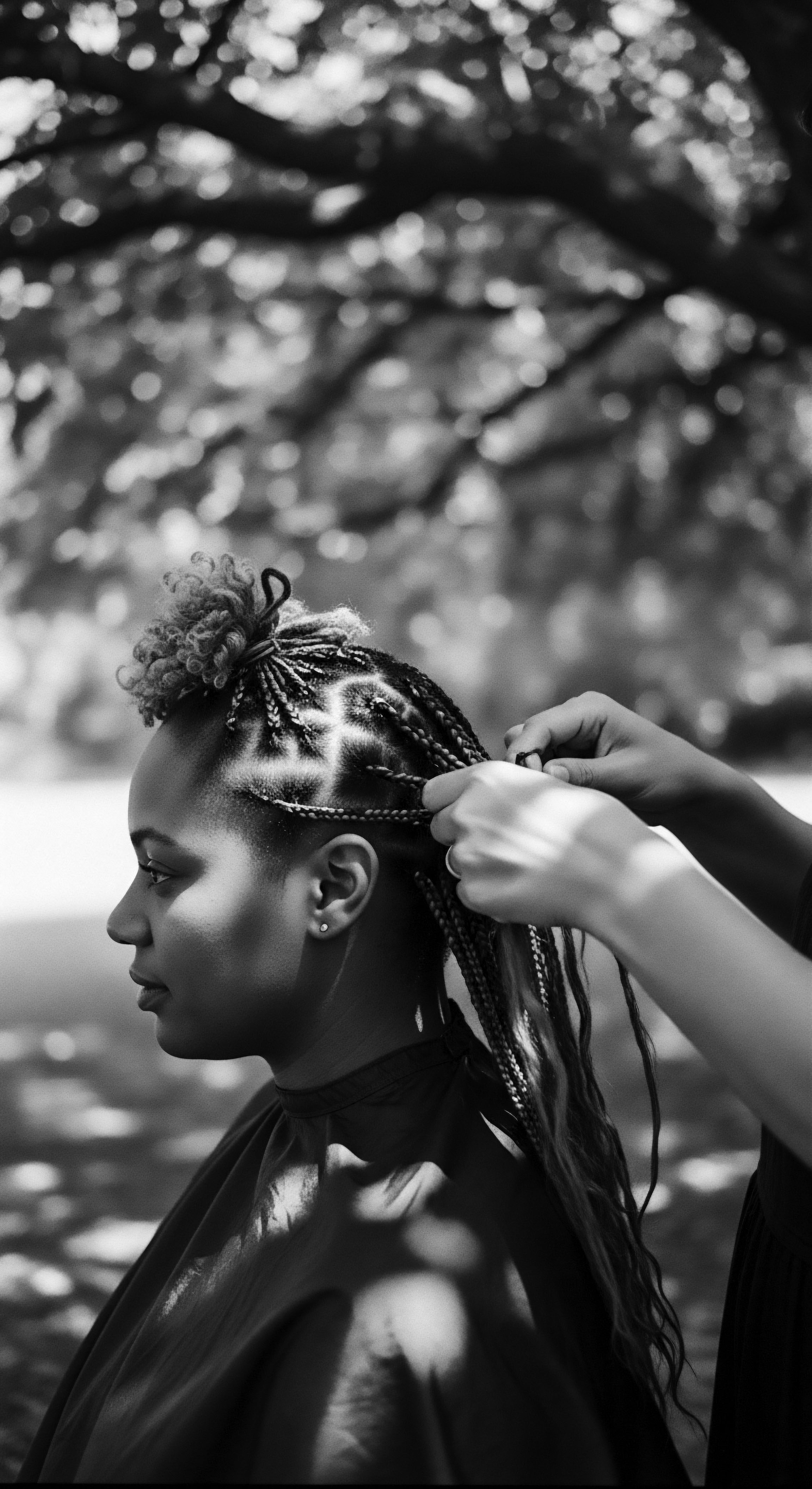
How Did Ancient Practices Inform Hair Classification?
While modern hair classification systems (like types 1-4, with sub-types A-C) are relatively recent developments, ancient African societies had their own nuanced ways of distinguishing hair types and styles, often linked to social identity and cultural meaning. For example, specific braiding patterns were unique to certain tribes, serving as clear markers of belonging. These distinctions were not about numerical categories but about the deep, inherited knowledge of how hair expressed one’s place within the community.
The lexicon of textured hair, both historical and contemporary, is rich with terms that speak to its complexity and beauty. From the Yoruba term Irun Kiko for thread-wrapping styles, carrying meanings of femininity and rites of passage, to the widely recognized Cornrows, known as Kolese Braids in Yoruba, these names carry stories and cultural weight. This vocabulary extends beyond mere description; it speaks to the artistry and intention behind each style.

Ritual
As we step beyond the foundational understanding of textured hair, we enter the realm of ritual, where braids transform from mere biological expressions into acts of deep cultural resonance. The evolution of braiding techniques, passed down through generations, has shaped the experience of textured hair heritage in profound ways. This section explores how these intricate practices have become a space of shared knowledge, gentle guidance, and respect for tradition, allowing the stories of ancestral care to flow through skilled hands.
Braiding was not a solitary act; it was a communal practice, a social art where family members and community members gathered, strengthening bonds and transmitting oral histories alongside styling techniques. This shared experience provided comfort and continuity, particularly during the transatlantic slave trade, when the act of braiding became a powerful form of cultural resistance and preservation. Enslaved women would braid each other’s hair, incorporating patterns that served as secret messages or maps for escape routes. This profound historical example underscores how braids transcended aesthetic value, becoming a silent language of survival and an unbroken link to a heritage slavery sought to erase.

How Have Braids Served As Protective Adornments?
Braids have long served as a primary form of Protective Styling for textured hair. This practice involves tucking away the hair ends and minimizing manipulation, shielding strands from environmental elements like extreme temperatures, wind, and precipitation. This not only reduces breakage but also aids in length retention and promotes healthy hair growth by allowing the hair to rest and thrive undisturbed.
Ancient African societies intuitively understood these benefits. For instance, the Himba people of Namibia utilized red, pigmented strands, often braided, to protect themselves from the sun. The maintenance-free nature of braided styles also made them practical for the demanding tasks of daily life in rural communities. This deep, practical wisdom underpins the longevity of braiding as a core aspect of textured hair care heritage.
Here are some traditional protective styles and their origins:
- Cornrows ❉ Dating back to 3500 BCE in Africa, particularly the Horn and West coasts, cornrows (known as Kolese braids in Yoruba) were used to indicate tribal affiliation, age, marital status, wealth, and even religion.
- Box Braids ❉ Evidence of this style traces back to 3500 BCE in South Africa, where their complexity often signified wealth and accomplishment.
- Fulani Braids ❉ Originating from the Fula people of West Africa, these styles traditionally involve five long braids, often adorned with silver or gold coins, beads, and cowrie shells, symbolizing wealth, status, or marital status.
- Bantu Knots ❉ A protective style originating from the Zulu tribe of South Africa, these coiled knots are both fashionable and easy to maintain.
The enduring practice of braiding speaks volumes about the communal spirit and ingenuity of Black hair traditions, especially in the face of adversity.
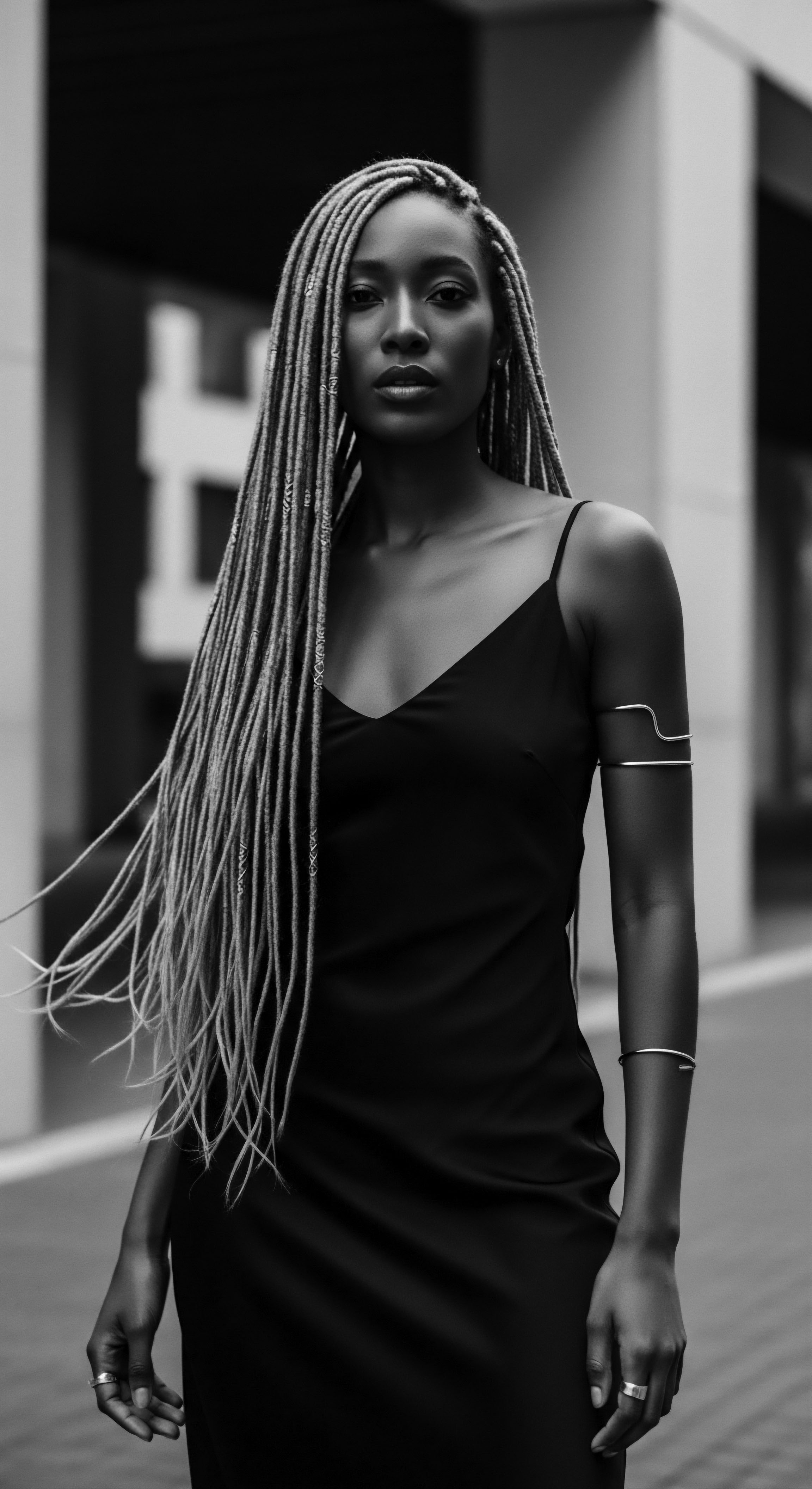
What Ancestral Ingredients Nourish Braided Hair?
The holistic care of textured hair, particularly when styled in braids, has always been rooted in ancestral wisdom and the bounties of the land. Traditional African hair care practices relied heavily on natural ingredients, many of which are now validated by modern scientific understanding for their moisturizing and protective properties.
Consider the following traditional ingredients and their uses:
| Ingredient Shea Butter (Vitellaria paradoxa) |
| Traditional Use in Hair Care Nourishes, protects, and moisturizes hair, forming a protective barrier against dryness and breakage. |
| Heritage Connection to Braiding Applied to braided styles to seal in moisture and provide a protective layer, maintaining the integrity of the braids and the hair within. |
| Ingredient Marula Oil |
| Traditional Use in Hair Care Rich in antioxidants and fatty acids, protects against dryness, and makes hair softer and shinier. |
| Heritage Connection to Braiding Used to lubricate the scalp and hair during braiding, promoting scalp health and adding luster to the finished style. |
| Ingredient African Black Soap |
| Traditional Use in Hair Care A traditional cleanser from West Africa, made from plant ash and oils, used for gentle cleansing of hair and scalp. |
| Heritage Connection to Braiding Prepares the hair for braiding by thoroughly cleansing without stripping, creating a clean foundation for long-lasting styles. |
| Ingredient Rhassoul Clay |
| Traditional Use in Hair Care From Morocco, a mud wash that cleanses hair and scalp without stripping natural oils, and can be used as an exfoliator. |
| Heritage Connection to Braiding Utilized as a cleansing ritual before braiding, ensuring a clean scalp and hair for optimal braid longevity and scalp health. |
| Ingredient Rooibos Tea |
| Traditional Use in Hair Care From South Africa, possesses antimicrobial and antioxidant properties, aiding healthy hair growth. |
| Heritage Connection to Braiding Used in rinses to support scalp health and prepare hair for braiding, contributing to overall hair vitality. |
| Ingredient These ingredients underscore a profound understanding of natural remedies within Black hair heritage, supporting both the health and aesthetic of braided styles. |
The emphasis on moisture retention and scalp health through these natural applications is a consistent thread in ancestral hair care, directly supporting the longevity and beauty of braided styles. This wisdom, passed through generations, continues to shape contemporary hair wellness practices.
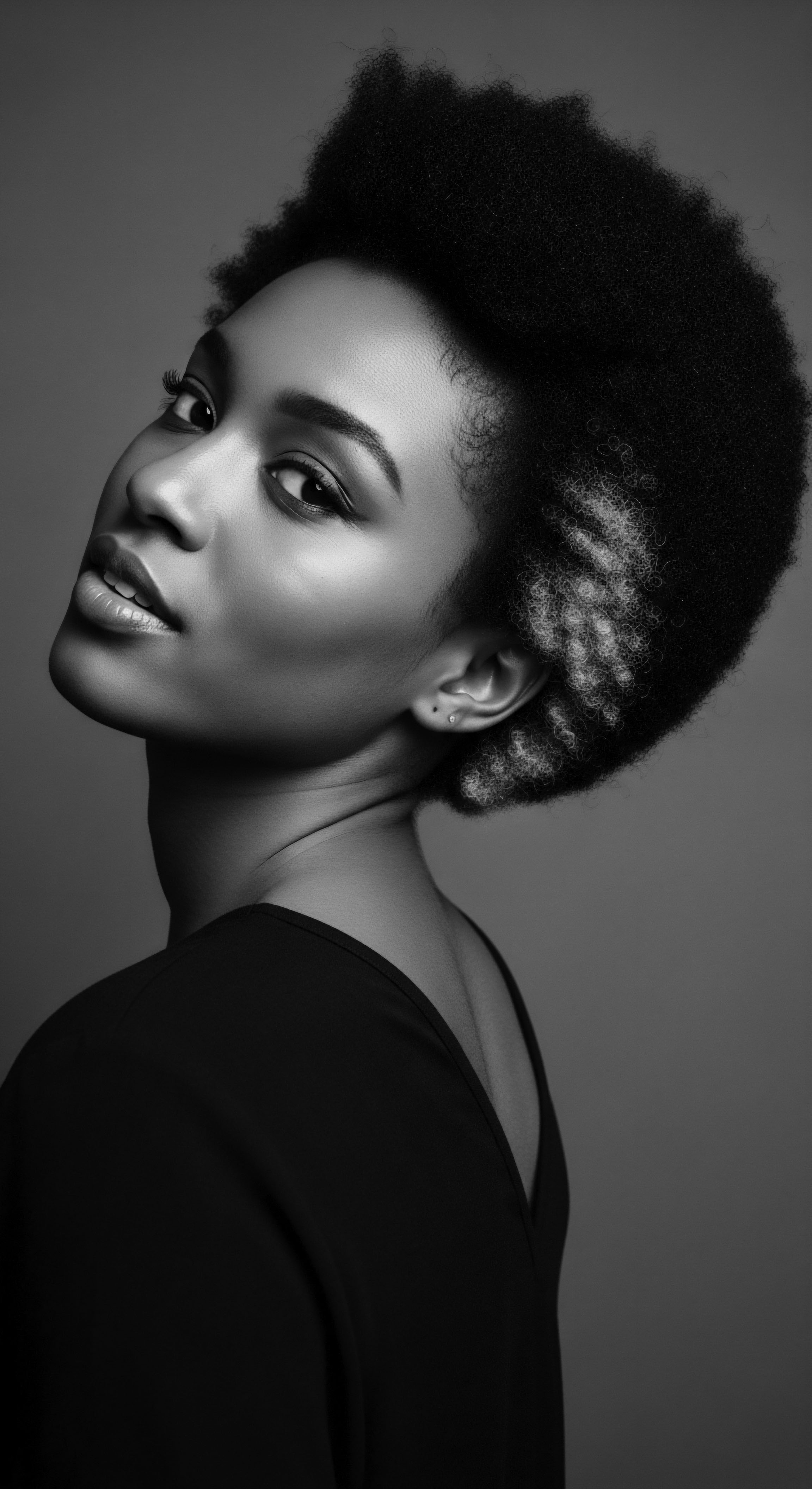
Relay
The journey of braids in Black heritage reaches its most sophisticated expression as we consider their role in shaping cultural narratives and envisioning future hair traditions. This section invites a profound insight, where scientific understanding, cultural depth, and the intricate details of braids converge, revealing the multifaceted legacy of textured hair. We move beyond surface-level discussion to analyze the complex interplay of biological, psychological, social, and historical factors that imbue braids with their enduring symbolism.
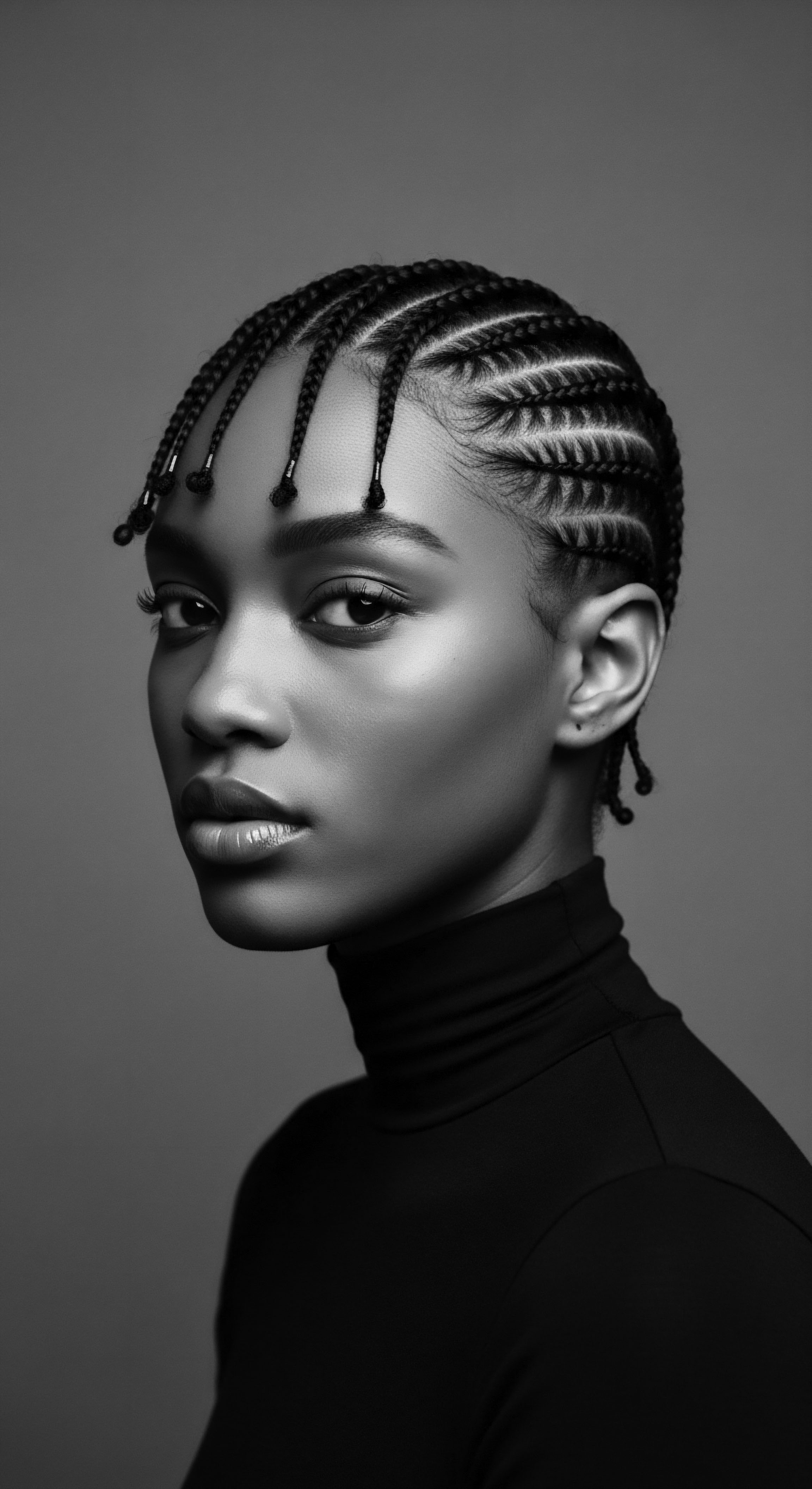
How Did Braids Become Tools of Communication and Resistance?
During the horrific period of the transatlantic slave trade, when millions of Africans were forcibly removed from their homelands, braids became more than just a means of keeping hair neat; they became clandestine maps and repositories of survival. Enslaved individuals, stripped of their material possessions and often their language, found a silent, yet potent, form of communication within the intricate patterns of their hair. For example, some historical accounts suggest that cornrows were used to depict escape routes or to hide seeds for cultivation upon reaching freedom. This specific historical example powerfully illuminates how braids served as cultural symbols of defiance, a quiet rebellion against dehumanization, and a means of preserving ancestral knowledge and identity in the face of unimaginable oppression.
The resilience of these practices continued into the post-slavery era and gained renewed prominence during the Civil Rights Movement. The embrace of natural hairstyles, including braids, became a powerful statement against Eurocentric beauty standards and a symbol of Black pride and unity. Icons of the movement popularized styles like the Afro and various braided looks as emblems of resistance and solidarity with African roots.

What Is The Social And Spiritual Language of Braids?
Beyond their practical and resistance-oriented uses, braids held deep spiritual and social meanings in many African societies. Hair, often considered the most elevated part of the body, was seen as a conduit to the divine and a connection to ancestors. The elaborate designs woven into hair could signify a person’s social status, age, marital status, or even their spiritual devotion.
In Yoruba culture, for instance, hairstyles like the “Irun Kiko” carried deep spiritual significance, often performed by skilled braiders who were highly respected. Young women wore elaborate braids during initiation ceremonies, signifying their transition to adulthood. The Ashanti people of Ghana even incorporated Adinkra symbols into their hairstyles, each symbol carrying a specific message or proverb related to wisdom, strength, or unity.
This profound connection between hair, spirituality, and social standing meant that hair care was not a mundane task but a sacred ritual. The communal act of braiding, often taking hours or even days, provided a vital opportunity for bonding, storytelling, and the intergenerational transfer of cultural knowledge.
The impact of this cultural symbolism extends into the contemporary world. As Chimamanda Adichie’s novel Americanah (2013) illustrates, the identities of African diasporic women are often braided, reflecting an amalgamation of past and present experiences, where hair becomes an emblem of a gendered racial identity and a site for empowerment (El-Ateek, 2013, p. 114).
The versatility and diversity of braided hairstyles reflect the rich cultural heritage associated with Afro-textured hair, serving as a powerful form of artistic and personal expression. Even today, legislation like The CROWN Act in the United States seeks to protect individuals from discrimination based on natural hair texture and style, including cornrows, acknowledging the deep cultural significance of these styles.
The role of bonnets, too, carries a complex history tied to Black heritage. While bonnets were initially used in high society and later weaponized during enslavement to distinguish Black women as enslaved people, Black women transformed them into symbols of creative and cultural expression. They chose beautiful fabrics and adorned their headwraps, refusing to let the bonnet remain solely a tool of oppression. This resilience reflects a powerful reclaiming of identity through everyday practices, demonstrating how items once used for subjugation were reappropriated as symbols of Black resistance and sovereignty.
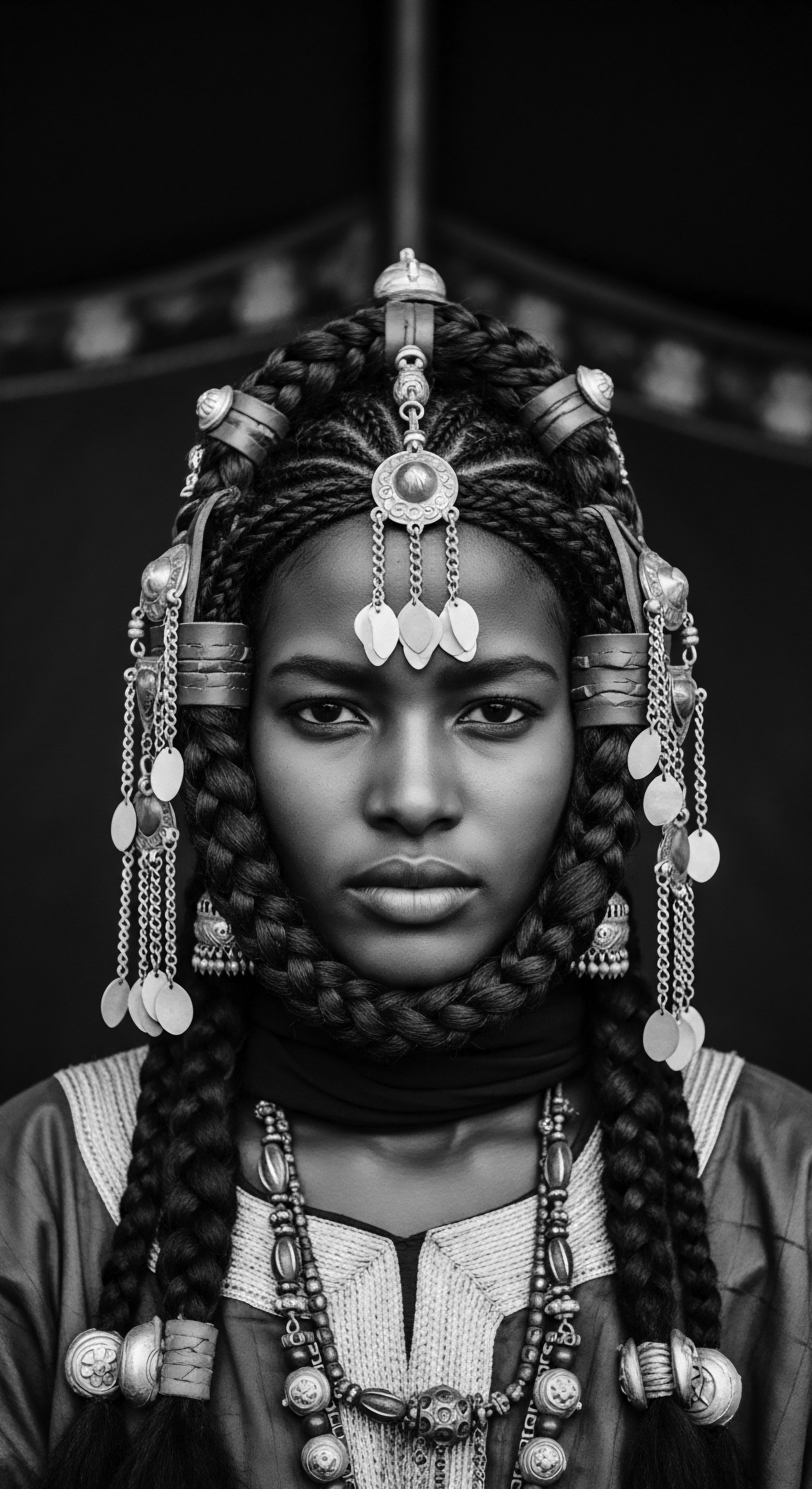
Reflection
The enduring legacy of braids in Black heritage is a profound testament to the resilience of textured hair and the communities it crowns. Each carefully constructed coil and plait carries the echoes of ancestral wisdom, the strength of those who resisted, and the vibrant expressions of identity that continue to shape the present and future. From the ancient practices of care that honored the very biology of textured strands, to the quiet acts of rebellion woven into patterns during times of oppression, braids have always been more than mere hairstyles.
They are living narratives, a visual language spoken across generations, connecting us to a deep well of cultural knowledge and a shared spirit of self-determination. The journey of a strand, in its myriad forms, is a constant reaffirmation of beauty, belonging, and the unbound spirit of heritage.

References
- Afriklens. (2024, November 1). African Hairstyles ❉ Cultural Significance and Legacy .
- Afriklens. (2024, December 3). Natural African Haircare ❉ Celebrating the Afro and Braids .
- Afriklens. (2025, April 12). How African Hairstyles Reflect Identity ❉ and Heritage .
- Annie International, Inc. (2023, December 21). The Origin Story Of The Bonnet .
- B.O.M.M. (2023, May 30). Bonnets ❉ A Cultural Staple in Black Communities .
- BLAM UK CIC. (2022, September 15). The history of Black Hair .
- Byrdie. (2022, April 28). The Beautiful, Black History of Cornrows .
- Cee Cee’s Closet NYC. (2021, March 10). The History of Bonnets .
- DOLAPO OBAT. (2023, December 17). The Intricate Tapestry of African Braided Art .
- El-Ateek, S. A. (2013). Braiding African Identities ❉ Diaspoetic Reading of Black Women in Chimamanda Adichie’s Americanah .
- Genesis Career College. (2024, January 16). A History Lesson On Hair Braiding .
- Haku Holistics. (2023, November 4). The Art of African Braiding ❉ A Historical Deep Dive .
- Joico. Roots, Rise & Influence ❉ A Retrospective of Textured Hair .
- Juniper Publishers. (2024, April 19). Cosmetic Ethnobotany Used by Tribal Women in Epe Communities of Lagos State, Nigeria .
- Katherine Haircare. (2025, April 18). This Homemade Afro Hair Product is 10x Better than Just Shea .
- MDPI. (2024, February 1). Cosmetopoeia of African Plants in Hair Treatment and Care ❉ Topical Nutrition and the Antidiabetic Connection? .
- Odele Beauty. (2024, January 16). A History Lesson On Hair Braiding .
- OkayAfrica. A Regional Walk Through The History of African Hair Braiding .
- Our Ancestories. (2025, April 4). Braids, Beads, and Beauty ❉ Exploring African Hair Traditions With Your .
- RevAir. (2023, May 4). The Benefits of Protective Styles .
- The Afro Curly Hair Coach. (2022, October 25). Cornrows and The TransAtlantic Slave Trade .
- The Diva Shop Nigeria. (2023, February 24). A short history of Braiding .
- Trill Mag. (2024, June 24). The Cultural Roots of Your Summer Braids .
- Universo MOLA. Everyday resistance ❉ Fashion as vehicle of resistance .
- Wikipedia. Protective hairstyle .
- Wikipedia. Cornrows .
- YorkSpace. (2021, October 20). Braided Archives ❉ Black hair as a site of diasporic transindividuation Océane Nyela A Thesis Submitted to the Faculty of Gradua .
